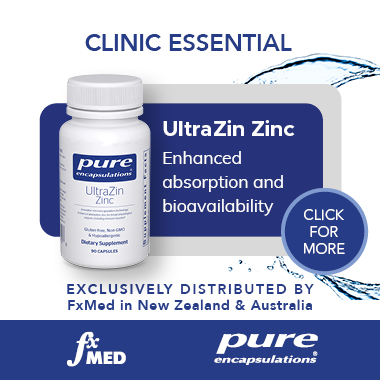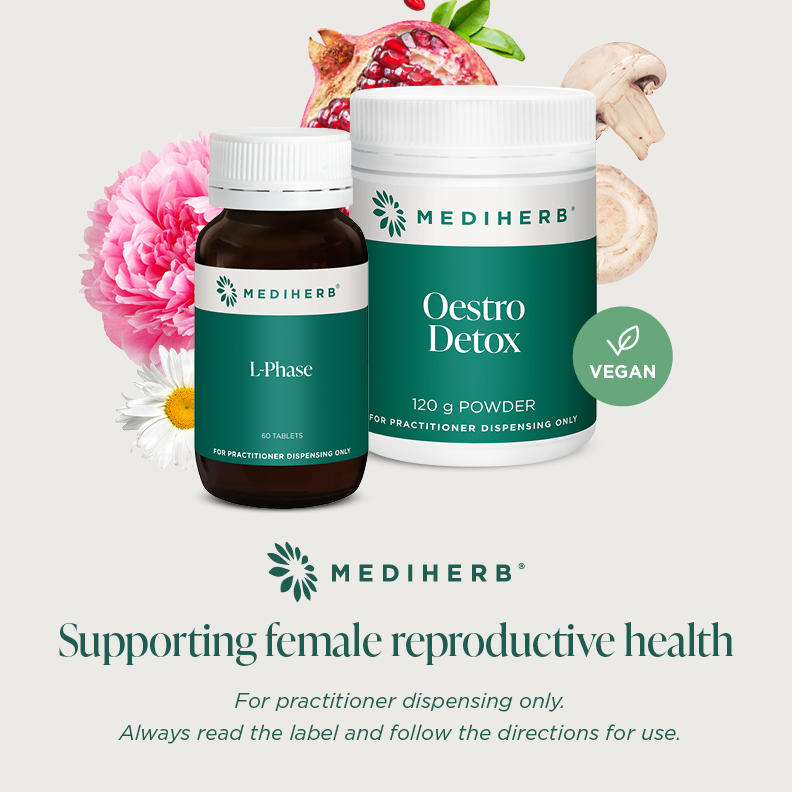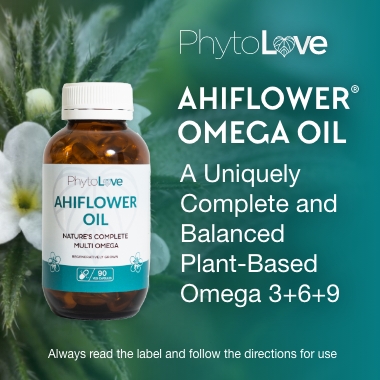Volume 33 Issue 1
Disclosing conventional medicine use to naturopaths and herbalists, a real issue
Susan Arentz
For referencing Arentz S. Disclosing conventional medicine use to naturopaths and herbalists, a real issue. The Australian Journal of Herbal and Naturopathic Medicine 2021;33(1):8-9.
DOI https://doi.org/10.33235/ajhnm.33.1.8-9
One of the main underpinning risks for patients of naturopaths and herbalists is often cited as being related to their non-disclosure to medical practitioners of their use of naturopathy and herbalism. But what about not telling naturopaths and herbalists about the use of medicine? It may be more common than you think.
It has been found that up to 58.5% of naturopathic patients and 66.3% of herbalist patients do not, or only partly disclose their use of conventional medicine, including their use of pharmaceuticals1. This phenomenon was explored in the article Development and preliminary evaluation of the Conventional Medicine Disclosure Index by Erica McIntyre and colleagues, published on 31 January 2021 in the journal Research in Social and Administrative Pharmacy1. Researchers found rates of non-disclosure to naturopaths and herbalists and other traditional, complementary and integrative medicine (TCIM) practitioners was relatively high. But they went further than just describing the rates of disclosure and non-disclosure. The researchers purpose-built an instrument (questionnaire) to explore and measure TCIM patients’ reasons, and then they appraised the validity of the instrument and the accuracy of their findings. The approach not only described the rates of non-disclosure/disclosure, but also explained the complex reasoning behind some decisions our patients make when in clinic with us.
The instrument design used an innovative formative approach that captured complex factors that might contribute, modify and/or control a patient’s reasoning, and revealed nuanced beliefs and attitudes of people using TCIM, including patients of naturopaths and herbalists. The model was validated by multi-collinearity, statistically significant associations and relevance, and determined the relative importance of the reasons for conventional medicine disclosure or non-disclosure, including factors that may not usually be expected to be within scope. For example, it showed that one of the main reasons patients disclosed their use of conventional medicine to TCIM practitioners was due to their concerns about conventional medicine and because they sought information about it from TCIM practitioners outside of conventional medicine settings. This means that some of our patients disclose their use of medicine because they are worried about it, and because they believe we know about the benefits and risks, even though (in Australia and New Zealand) conventional medical practice is beyond our scope of knowledge and training2.
In relation to non-disclosure, one of the reasons for patients not telling TCIM practitioners of their conventional medicine use was because they were not asked. This same reason has been reported by medical patients who use naturopathy and herbal medicine and other TCIM services; they do not disclose (their use) because they are not asked3,4. Although the reasons of naturopaths and herbalists for not asking are not yet known, investigations into doctors reasons for not asking about TCIM has, amongst other reasons, been found to be due to doctors being unsure about what to do with the information. For most doctors for example, the risks and benefits of naturopathy is beyond their scope of knowledge. They are not aware of its role in symptom management, prevention nor treatment of disease, and they are not sure of the evidence base5. It begs the question about whether TCIM practitioners don’t ask about conventional medicine use because they may be unsure about the risks and benefits and the evidence base for conventional medicine; perhaps they too do not know what to do with the information.
Obviously, a patient’s non-disclosure increases potential risks, including negative interactions of ingestible treatments, something which is extensively reported in the literature. But there are also serious risks when patients do disclose their use if recipient practitioners do not know the meaning of the information, especially if their patient presumes that they do. In this case, although the practitioner may provide treatment within their professional scope of practice, they may not be able to provide treatment in the context of the care their patient is using and may want to continue to use. And, from a technical perspective, the practitioner may not understand the potential benefits and risks, and incorrectly attribute efficacy or think their treatment is working when it isn’t, or that adverse reactions are due to their own treatment when in fact it is due to the other. Furthermore, there is a potential risk of lost opportunity for more effective or safer single treatments, be it naturopathic, herbal or conventional medicine. And, aside from individual health risks, there may also be the risk of unnecessary financial costs.
Clearly, patients stand to benefit from pragmatic, interdisciplinary knowledge about conventional and TCIM healthcare which may mitigate these risks. In reality, however, very few practitioners have inter-disciplinary autonomy from qualifications in both medicine and TCIM. Therefore, the benefits that patients seek (and presume) from interdisciplinary knowledge may only be realised thorough practitioners’ effective interdisciplinary communication6. Effective communication is defined by a capacity for conveying potentially conflicting ideas, approaches and objectives, and an ability to negotiate, know when to compromise, and faithfully advocate on behalf of patients as well as the discipline.
Patients’ beliefs may already be underpinned by their presumptions of collaborative, interdisciplinary knowledge sharing between TCIM and medical practitioners but, as McIntyre and colleagues concluded, a full understanding can only come from more rigorous research exploring the issue1. If it is a core expectation of TCIM patients, failing the enrolment of practitioners into double-degrees (TCIM and conventional medicine), or embedding complete knowledge components into under-and/or post-grad curriculum, effective interprofessional communication techniques cannot be overstated as a crucial attribute of naturopaths and herbalists, as this quality enables an appropriate response to a patient’s disclosure of conventional medicine use, despite conventional medicine being beyond the scope of the knowledge and skills of naturopaths and herbalists.
This issue includes the peer-reviewed abstracts accepted for presentation at the 2021 Herbal and Naturopathic Medicine Symposium, on 1–2 May at Surfers Paradise, Queensland. The NHAA’s International Conference due to be held this year in Hobart was postponed until 2022 due to the pandemic; the symposium is an opportunity for people to catch-up and update their knowledge. Three workshops and 22 presentations are centred around the themes of Business and Practice, Public Health, Environment and Sustainability, Clinical Insights and Research.
Also included in this issue is an interview with Dr Anne-Louise Carlton, a public health academic and expert in statutory regulation of complementary medicine professions. Dr Carlton has been working with the Naturopathic Council of Australia to develop the case for statutory registration of naturopathic medicine practitioners for presentation to government. Dr Amie Steel’s interview informs us of the strategic plan, potential pitfalls and the beneficial implications of statutory registration of naturopathic practitioners.
Dr Wendy McLean has again put together an edifying MedJourn and MedPlant section. Reviewed publications include two outlining evidence for naturopathic and herbal medicines for treatment of mild to moderate SARS-CoV-2 (COVID-19) infections, one investigating zinc and vitamin C alone and together against usual care, and the other investigating a nano-preparation of Curcuma longa against placebo. No benefits were found for zinc and/or vitamin C over usual care for recovery from mild to moderate symptoms; however, the open label study design didn’t account for self-prescribing of zinc or vitamin C by participants in the control group (usual care). Nano curcumin was more effective than placebo for improved recovery rates in hospitalised patients with mild to moderate infections. Other conditions reviewed include chronic diseases – osteoarthritis (Boswellia, turmeric and red algae), diabetes (turmeric), non-alcoholic fatty liver disease (Nigella sativa and yoghurt fortified with vitamin D), ADHD (pine-bark), periodontal disease (Baicalensis scutellaria and palmitoylethanolamide (PEA)), chronic pelvic pain (vitamin D and associations with pollen), Herpes simplex (olive leaf) and male infertility (N-acetyl-cysteine (NAC)), for your enjoyment.
Author(s)
Susan Arentz PhD, BHSc(Hons)
Editor, Australian Journal of Herbal and Naturopathic Medicine
PO Box 696, Ashfield, NSW 2131, Australia
editor.ajhnm@nhaa.org.au
References
- McIntyre E, Foley H, Harnett J, Adams J, Steel A. Development and preliminary evaluation of the Conventional Medicine Disclosure Index. Research in Social and Administrative Pharmacy 2021.
- Dunn J, Steel A, Adams J, et al. Characteristics of global naturopathic education, regulation, and practice frameworks: results from an international survey. BMC Complementary Medicine and Therapies 2021;21:1–19.
- Davis EL, Oh B, Butow PN, Mullan BA, Clarke S. Cancer patient disclosure and patient-doctor communication of complementary and alternative medicine use: a systematic review. The Oncologist 2012;17:1475.
- Foley H, Steel A, Cramer H, Wardle J, Adams J. Disclosure of complementary medicine use to medical providers: a systematic review and meta-analysis. Scientific Reports 2019;9:1–17.
- Patel SJ, Kemper KJ, Kitzmiller JP. Physician perspectives on education, training, and implementation of complementary and alternative medicine. Advances in Medical Education and Practice 2017;8:499.
- Nguyen J, Smith L, Hunter J, Harnett JE. Conventional and complementary medicine health care practitioners’ perspectives on interprofessional communication: a qualitative rapid review. Medicina 2019;55:650.






